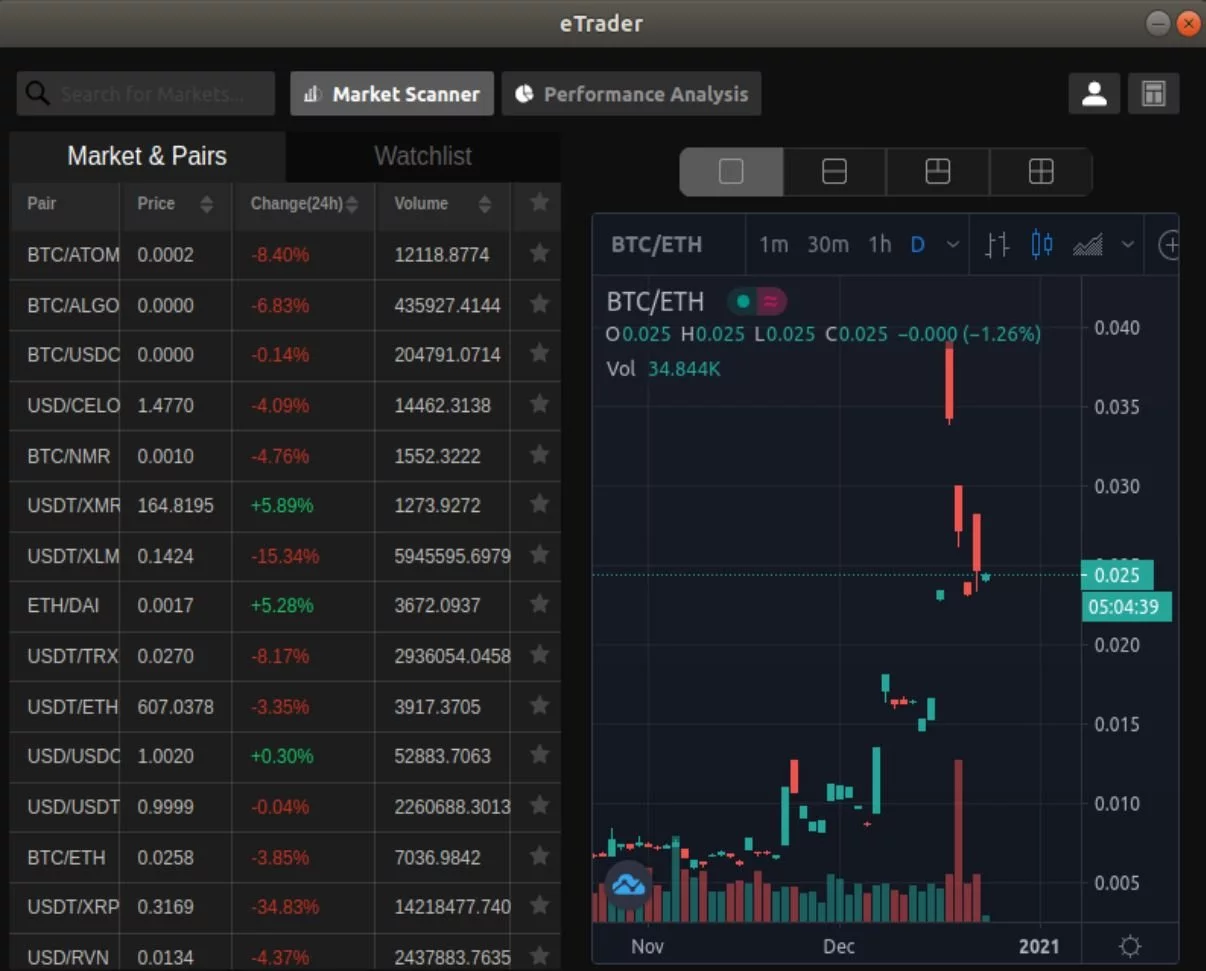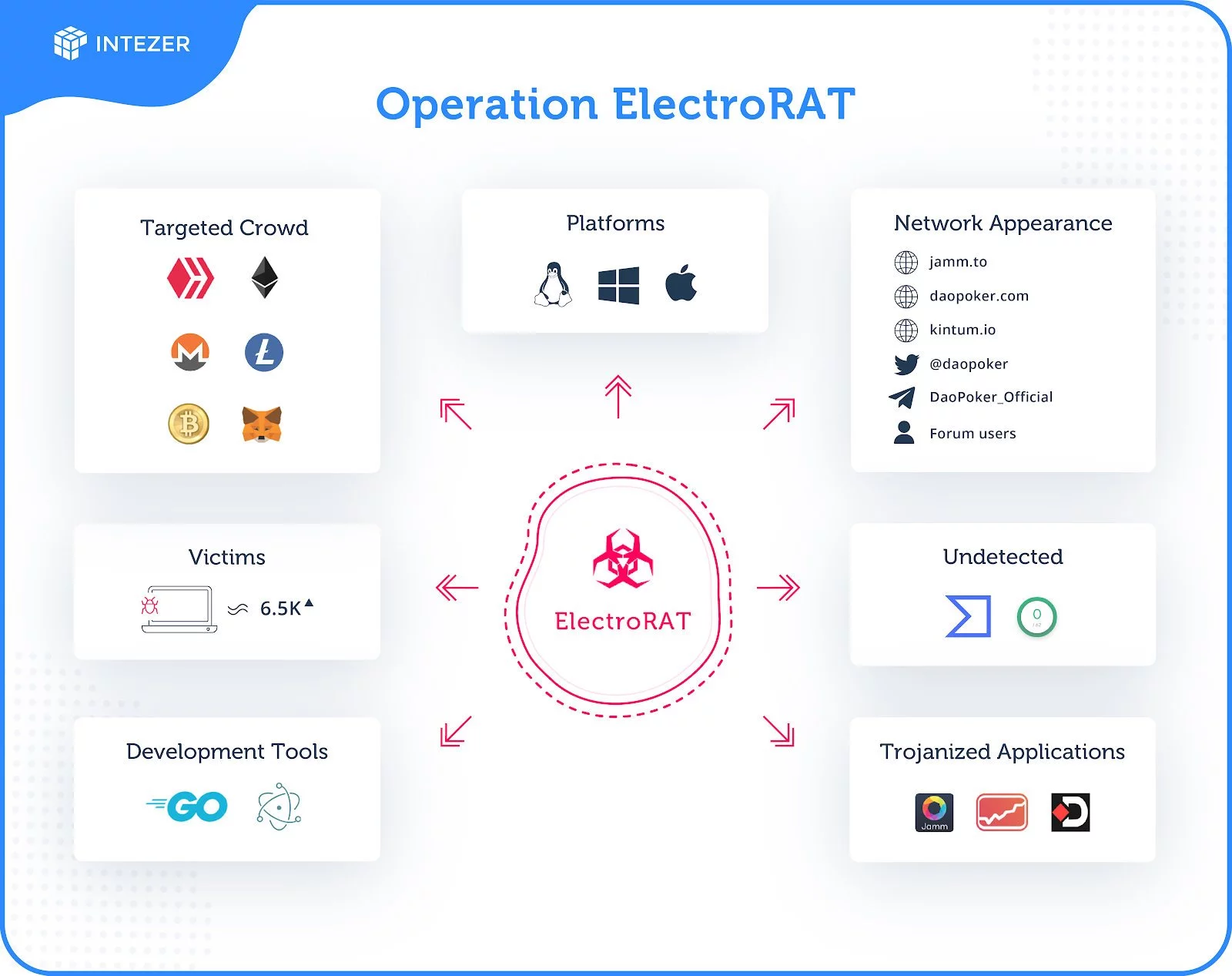KEEP IN TOUCH
Subscribe to our mailing list to get free tips on Data Protection and Cybersecurity updates weekly!







Security researchers have discovered a new remote access trojan (RAT) used to empty the cryptocurrency wallets of thousands of Windows, Linux, and macOS users.
Named ElectroRAT after being discovered in December, the cross-platform RAT malware is written in Golang and it was used as part of a campaign that has been targeting cryptocurrency users since the start of 2020.
The attackers behind the ElectroRAT operation created and injected their RAT into custom Electron applications made to look and behave like cryptocurrency trade management tools (Jamm and eTrade) and as a cryptocurrency poker app (DaoPoker).
After being launched on a victim’s computer, these apps would show a foreground user interface designed to divert the victims’ attention from the malicious ElectroRAT background process.

Also Read: Best Privacy Certification: 3 Simple Steps On How To Achieve
To lure potential victims, the threat actors promoted the trojanized apps on social media (Twitter and Telegram) and on dedicated online forums (bitcointalk and SteemCoinPan) according to an Intezer report shared with BleepingComputer earlier this week.
The malicious apps were downloaded by thousands of victims between January and December 2020, with one of the pastebin pages used by the malware to retrieve command-and-control (C2) server addresses having been accessed almost 6,500 times throughout the year.
“The trojanized application and the ElectroRAT binaries are either low detected or completely undetected in VirusTotal at the time of this writing,” Intezer says.
After getting infected and having their wallets drained by the malware’s operators, some of the victims were also seen warning others of the dangerous apps.

C2 pastebin pages published by the same user who uploaded the ElectroRAT C2 info show that the attackers have also made use of off-the-shelf Amadey and KPOT information stealer trojans.
Both stealers target only the Windows platform and are well-known trojans that would make efforts to remain undetected almost impossible following infection.
The new Golang-based and undetected ElectorRAT malware was most likely a much more effective tool for a stealthy operation, especially since it has similar capabilities and it allows targeting multiple platforms.
ElectroRAT is a remarkably invasive malware with a large assortment of capabilities shared by its Windows, Linux, and macOS variants including “keylogging, taking screenshots, uploading files from disk, downloading files, and executing commands on the victim’s console.”
“It is very uncommon to see a RAT written from scratch and used to steal personal information of cryptocurrency users,” Intezer concludes.
“It is even more rare to see such a wide-ranging and targeted campaign that includes various components such as fake apps and websites, and marketing/promotional efforts via relevant forums and social media.”

If you have downloaded and launched the Jamm, eTrade, or DaoPoker trojanized apps on your computer, you should immediately kill their processes and completely remove all related files from the system.
If your cryptowallets haven’t yet been emptied, you should also immediately move all your funds to a new wallet and change all passwords as soon as possible.
Also Read: Computer Misuse Act Singapore: The Truth And Its Offenses
Intezer also provides this YARA rule that can help to detect any EletroRAT in-memory artifacts.
In December, Intezer has also discovered another Golang-based malware with self-spreading capabilities that has been used to deploy XMRig cryptocurrency miners on Windows and Linux servers.